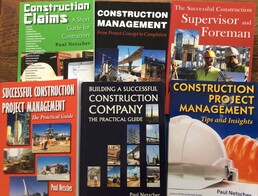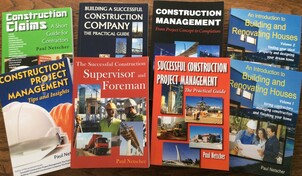 Image courtesy of Stuart Miles at FreeDigitalPhotos.net Image courtesy of Stuart Miles at FreeDigitalPhotos.net The environment is facing pressure everywhere from human impacts. There are few places in the World untouched by human impacts, which range from plastic debris, to air pollution and smog, through to wholesale destruction of forests and rivers. Environmental damage is leading to the extinction of plants, birds and animals, and it’s impacting our health. More people are becoming environmentally aware of their actions and choices on our planet. More and more companies are being forced by shareholders, clients and the general public to take a more considered approach to the environment. Banks aren’t funding some projects because of the environmental risks, and the danger of customer and public backlash. But often a lender’s refusal to fund companies and projects is based on pure financial considerations, and companies that are wasteful, or which carry out unsustainable and unproductive practices, are frequently companies which are less profitable and less successful. Indeed, being environmentally aware and doing our bit for the environment usually has other benefits, and the biggest benefit is to our wallets. 12 steps to improve your construction project’s environmental impact

 Image courtesy of Sira Anamwong at FreeDigitalPhotos.net Image courtesy of Sira Anamwong at FreeDigitalPhotos.net
Contractors often can’t control the design of buildings, structures and facilities. Designers have a huge say on the environmental impact of buildings. From the materials they select, to the footprint of the structures on the environment, through to the energy consumption of the completed structure, there are many ways in which the design can be optimised to reduce energy and water demands of the facility, both during construction and when the facility is in operation. The right choices will benefit the owners and the environment in the long term. When contractors are involved in the design it’s important that they make the right choices for the environment. In a future article I’ll discuss how designers can help the environment while enhancing the finished facility so it’s cheaper to operate and more healthy to those using it. Don’t be environmentally shamed  Image courtesy of Sira Anamwong at FreeDigitalPhotos.net Image courtesy of Sira Anamwong at FreeDigitalPhotos.net The public is becoming more environmentally aware. Clients are becoming environmentally aware. Shareholders are becoming environmentally aware. Construction companies and construction projects that are seen to be wasteful, that disregard the environment, will face public shaming and they will be in the media for the wrong reasons which will harm their reputation and business. More clients are seeking contractors with good environmental credentials. It’s imperative that contractors involve all their employees with reducing waste, improving productivity and instilling good environmental practices. Aiming for zero waste helps the environment and the bottom line  We all need to do our bit for the environment. Construction projects are a large consumer of materials and they’re a large producer of greenhouse gasses. Construction projects are often very wasteful places with poor productivity. By eliminating waste and with careful planning construction projects can become less harmful to the planet, and in doing so the project will save money and the contractor’s reputation will be enhanced. Do your bit for the environment. Do your bit for your children’s future. Walk your project today and see how you can reduce waste. See where you will save money. Go out and get your team involved. What are you doing to help the environment? Please Like and Share this article on Facebook and LinkedIn Do you want to learn how to manage construction projects successfully?Paul Netscher has written several easy to read books for owners, contractors, construction managers, construction supervisors and foremen. They cover all aspects of construction management and are filled with tips and insights. The books are available in paper and ebook from most online stores including Amazon. Need help with your construction project or construction company? Contact Paul Netscher for help and advice. To read more about the author’s books and find out where you can purchase them visit the pages on this website by clicking the links below:
To read more about the author visit the page 'Paul Netscher' Want to contact Paul Netscher please enter your details on 'Contacts' Find out how Paul Netscher can help you © 2020 This article is not to be reproduced for commercial purposes without written permission from the author.
1 Comment
Construction claims - are you claiming what you are due?In the course of every construction project, there will be delays, changes, and extra work. In order that the contractor is compensated for the time and additional costs incurred by these events, the contractor must submit a variation claim to the client. Clients don’t usually volunteer to pay contractors extra – even when they know they have delayed the contractor or added extra work to the contractor’s scope. So contractors have to ask for compensation and this involves submitting a variation claim. Will your variation claim succeed? Image courtesy of pakorn at FreeDigitalPhotos.net Image courtesy of pakorn at FreeDigitalPhotos.net Regrettably, many of these variation claims are prepared badly. Sometimes the contractor even forgets to claim everything (all their costs and all their time) they’re entitled to claim. Often clients reject portions of the variation claim, or perhaps even the entire claim. This might be because the client is trying to avoid paying a claim or granting the additional time, but frequently it’s because the claim is not justified in terms of the contract, or there was insufficient evidence to persuade the client that the variation claim was justified and that the costs were legitimate. The onus is on the contractor to prove that their construction variation claim is legitimate and that they deserve to be compensated fully for both the extra time and the additional costs they’re claiming. What to ask when preparing variation claims Image courtesy of stockimages at FreeDigitalPhotos.net Image courtesy of stockimages at FreeDigitalPhotos.net To improve the success when preparing your claim ask these questions: 1. Are we entitled to submit a variation claim? Depending on the construction contract terms and conditions, contractors can usually only claim for variations and delays resulting from the actions of the client and the client’s team, or from events they couldn’t have foreseen when they priced the construction project. Sometimes contractors either don’t understand their construction contract document, or in an attempt to claw back time and money they’ve lost, they submit spurious claims for items they’re not entitled to be paid. Invariably the variation claim is rejected. This is a waste of the contractor’s time, time which could be better spent elsewhere on the construction project. It irritates the client, and the client is more likely to reject or query future variation claims from the contractor because they’ll now be suspicious of the contractor. 2. Have I included all the costs in the claim? Frequently contractors forget some costs that they’re entitled to claim. This is like leaving money lying on the ground. Always check all your legitimate costs are included. In the haste to prepare the claim often costs are overlooked or forgotten. Ask those directly involved with the work for their input into the claim – what do they know, or what can they add to the claim? 3. Will the claim make sense to the person reading it? Construction variation claims should clearly set out the facts in simple language. What are you claiming? Why are you claiming the items? What caused the event? What were the implications of the event? Don’t assume that the person reading the claim has an understanding of the situation. In fact, sometimes, especially when the variation claim is disputed, the claim is read and adjudicated by a person who isn’t familiar with the construction project and the events leading to the claimable event. Frequently claims are rejected because the person adjudicating the variation claim didn’t understand what the contractor was trying to say. Ask someone else to read your claim presentation and see if they can follow the claim presentation and your logic. 4. Are your calculations correct? Sometimes contractors make mistakes when adding days and costs. Presenting an answer bigger than the figures should give will give an impression that you’re deliberately trying to cheat the client, while claiming a smaller figure than the calculations actually adds to, means that you’re doing your company out of money. 5. Is the claim consistent, and does it agree with previous claims? Ensure that your logic is consistent and that you use the same data and figures throughout the variation claim. For example, don’t claim a worker’s cost at $15 an hour in one part of the claim and then use $16 somewhere else. Check that the figures and rates used are the same as previous variation claims. Inconsistencies will raise doubts in the client’s mind about the legitimacy of your facts and figures. 6. Can you prove and substantiate the figures used in your claim? Clients are entitled to request a breakdown or backup to support the figures and numbers in your variation claim. It will be embarrassing if you’ve claimed say $20 an hour for a worker’s wage but you can only produce supporting figures of $16 an hour. The client will start analysing and questioning everything in your claim. Generally, clients aren’t stupid and they will question facts and figures that don’t look right. 7. Have you taken account of all the impacts of the event? Frequently delay events and additional work have knock-on impacts which aren’t always included by contractors when formulating their variation claim. So for instance, a delay may result in work being moved into a season of unfavourable weather which could hamper and delay the project further. So you might have planned to close up excavations or buildings before the onset of the rainy season, but now the delay means that your plans are thwarted. Other times a delay on one section might mean that resources you scheduled to move between that section and another can’t be shared, meaning they’ll be less productive, or in some cases, additional resources must be mobilised at additional costs to complete the work. 8. Have I included all the supporting evidence? You literally have one chance to convince the client that your variation claim is legitimate. Once a variation claim is rejected it becomes difficult to convince the client that they were wrong to reject the claim. Minds are made up and difficult to change. Include all supporting documentation and evidence with your claim. 9. Have you notified the client of the claim? Usually, construction contracts specify that the client must be notified within a specified time period that the contractor intends to lodge a variation claim. This is seen by many contractors as being unfair, but it’s there so that the client can take action to rectify the issue where possible. This could include providing the missing information or access causing the delay, or rescinding the changes or the instruction causing the variation. Failure to timeously notify the client of the variation claim could result in it being rejected. So notify the client that a claimable event has arisen, while you formulate the impacts of the event. Indeed, sometimes the full impacts of the event can’t be assessed until the delayed event has ended. 10. Have you submitted the claim to the correct person? Usually, there’s a nominated person that variation claims must be submitted to. Claims sent to the wrong person, or the wrong address, might be ignored. Claims which aren’t settled and paid could negatively impact the contractor’s cash flow. Indeed I’ve had some projects which have nearly doubled in value because of changes and variations, so it was important to settle and agree on these claims as soon as possible. Of course, also make sure that you’ve spelled the person’s name correctly. Getting someone’s name wrong is not a good way to convince them that your claim has merit! ...Continue Reading..... This article was first published on the ClockShark website. To visit this website and continue reading the article click on the link above. Please share this post Do you want to learn how to manage construction projects successfully?Paul Netscher has written several easy to read books for owners, contractors, construction managers, construction supervisors and foremen. They cover all aspects of construction management and are filled with tips and insights.
The books are available in paper and ebook from most online stores including Amazon. © 2019 This article is not to be reproduced for commercial purposes without written permission from the author.  Image courtesy of artur84 at FreeDigitalPhotos.net Image courtesy of artur84 at FreeDigitalPhotos.net Every construction company and each construction project has slightly different rules. What was acceptable on one project might not be accepted on the next. Discipline means not only complying with the rules of the project as well as the company rules, but it also means behaving within the acceptable norms of society. You and your crew are ambassadors of your company during working hours, while you’re wearing the company uniform, while on company business, and when using company vehicles. Poor behaviour will reflect badly on your company. Flouting the client’s project rules will impact your company’s reputation. Discipline starts by understanding the company and the project rules. You can’t enforce rules if you don’t know or understand them. But of course, your crew must also know what rules apply to them, because they can’t be expected to comply with rules that they don’t know exist. Why construction rules should be enforced Construction project rules are often there to comply with local guidelines and permissions. Breaking these rules could result in problems for the client. Project rules are there to ensure the safety of everyone on the construction project. Project rules are there so that everyone on the project complies to the same standards. Rules which aren’t enforced will soon be ignored. Most people will always stretch the boundaries. If you know the speed limits on the roads aren’t enforced you will invariably drive faster. Even when the speed is enforced we often try and sneak a few extra kilometres over the limit, hoping that traffic officers won’t bother to stop us for a few kilometres over the limit – or if they do it will only be to give us a warning. So it is, that if a person arrives 5 minutes late today and nothing is said to them, then they are probably going to come 6 minutes late tomorrow. If you don’t say anything others will also arrive late for work and very soon your entire crew will start work 5 minutes late, then 10 minutes, and then who knows how late before you take a stand and insist people start work at the correct time. But, when one rule isn’t enforced and workers are allowed to arrive 5 minutes late, they’ll soon test the boundaries somewhere else and other rules will be bent and broken. It might sound foolish to reprimand someone for being 5 minutes late, but at what stage will you say something, and which rules will you enforce. Often there are multiple crews and a number of managers working on a construction project. Failing to enforce discipline with your crew could cause problems with other crews. Workers see what others can get away with, then try the same thing. When their manager reprimands them for the transgression they’re often resentful of their manager and can’t understand why another supervisor, foreman or project manager allows their team to bend or break project or company rules, but their manager is a hard arse, unfair, so and so, etc. Sometimes, people in your team go and work on another construction project with another manager. They can’t understand why that manager seems to have different rules to those that you applied when they worked for you. But, of course it’s usually not different rules, it’s simply that you didn’t apply some of the existing rules, that you accepted that some rules could be bent and broken. Consequently it’s unfair on the other managers in the company who have to instil and enforce the rules you don’t enforce. It’s also unfair on the workers who now don’t know what’s right and wrong, what’s acceptable and what’s not – it could even hamper their careers, or cause them to lose their jobs. Of course the same happens the other way, where you inherit workers who came from a manager who was slack and didn’t enforce discipline. It will make your job harder. Maintaining discipline on your construction projectDiscipline has to be enforced fairly, consistently and uniformly. You can’t ignore one worker’s transgression, maybe because they’re hard working, even indispensable to you, then reprimand and discipline another person for the same offence. Everyone in the crew must be treated equally. No matter your personal feelings, everyone must obey the project and company rules equally. Of course, that also includes you. Discipline isn’t about yelling and cussing workers who break the rules. It’s about telling the person what they’ve done and that it’s unacceptable. In most cases, depending on the transgression, there’re stipulated company disciplinary procedures to be followed, and set forms of punishment. Please like and share this article. Do you want to learn how to manage construction projects and construction companies successfully? Click on picture to view this book on Amazon Click on picture to view this book on Amazon This article is an extract from my book 'The Successful Construction Supervisor and Foreman' which is packed with construction project management tips and advice. I've written several easy to read construction management books for owners, contractors, construction managers, construction supervisors and foremen. They cover all aspects of construction management and are filled with tips and insights. The books are available in paper and ebook from most online stores including Amazon. Need help with your construction project or construction company?Contact me for help and advice.
To read more about the author’s books and find out where you can purchase them visit the pages on this website by clicking the links below:
To read more about the author visit the page 'Paul Netscher' Want to contact Paul Netscher please enter your details on 'Contacts' Find out how Paul Netscher can help you © 2020 This article is not to be reproduced for commercial purposes without written permission from the author. As an Amazon Associate I earn from qualifying purchases Poor quality ruins a reputation and it costs money to repair. Frequently contractors remain long after the project has been completed to repair defects. Sometimes contractors have to return long after they left the project site to repair problems caused by their poor workmanship. Poor construction qualityThink about it… would you want to return to a completed project to rectify defects? Would you employ a contractor again after they delivered a substandard project? Many of our construction projects were the second, third, or even the tenth project that we executed for the client. Often we won new projects because of referrals from pleased clients we had worked for, or because our new client visited projects that we had completed for other clients and they were impressed with our workmanship. We had a reputation for delivering quality projects on time. In fact, clients were prepared to pay a premium to employ us at a higher price than our competitors. Regrettably though, sometimes we did have quality problems on our construction projects which we had to rectify. We made embarrassing mistakes which we shouldn’t have made. These mistakes cost us money to fix and tarnished our reputation. When there are quality problems on construction projects, project managers are sometimes quick to make excuses or blame their team. Usually these are the same excuses: “the construction schedule was too tight so the work was rushed,” or “we weren’t paid enough to ensure good quality,” or the favorite excuse, “you can’t get good people nowadays,” or “there’s nobody with the right skills available.” Now, as mentioned above, poor quality costs money, so saying that delivering good quality will cost money is rubbish. Doing the work right first time is definitely cheaper than fixing problems later. Likewise blaming a tight construction schedule doesn’t stand up, because it takes time to rectify faults. Who is to blame for a lack of construction skills?Invariably those contractors using this excuse do little to no training – they simply expect to find people with the right skills on the street. But, it’s not just about training, it’s also about attracting and retaining skilled and competent workers. Regrettably, many contractors have poor employment practices and are content to employ almost anybody they can afford. It takes time and effort to train and mentor people, then retains them. But this effort is more than rewarded because trained and skilled people are more productive and they will produce good quality work. I’ve also had engineers, supervisors and superintendents tell me that they weren’t responsible for the poor quality on their section of works and that it was the quality manager who was responsible. Also, I see people blaming their tools, materials, equipment, the supervisor, or fellow workers for a poor quality product. Who is responsible for quality?Workers A top-to-bottom commitment is required for quality. A construction project will not achieve the required quality standards if individual workers are not committed to producing a quality product. At the same time, even if the workers are committed and well-trained, the project will not achieve the desired quality if the supervisors, superintendents, quality engineers, and the project or construction manager aren’t committed to producing a quality product. All workers and staff must take responsibility for producing the best quality product possible. Managers In saying this, management must also be mindful of how they influence the quality of the workmanship on the project, and what they can do to improve the quality culture, like sending craftsmen or supervisors on appropriate training courses. They should also continually look at the construction process with a critical eye, to see if changes would improve the quality of the end product. Maybe the construction materials or equipment are genuinely substandard, making it difficult for the workers to achieve the desired quality. Management needs to take care when selecting subcontractors and suppliers. The selection process mustn’t be purely based on price alone but must consider the quality, resources and the product that the suppliers and subcontractors can deliver. Even one bad supplier or subcontractor can jeopardise the construction project. The saying goes that bad workmen blame their equipment. But, even good workmen struggle to produce good quality work if they don’t have the right equipment. Equipment that isn’t right, that’s old, or that has blunt cutting edges, will slow work and could impact quality. Management must ensure that the right equipment is procured. But importantly, operators and those using the equipment must look after it, ensuring that it isn’t damaged or stolen and that it’s correctly maintained. Poor quality construction work should not be accepted, and construction project managers must not pass by substandard work without taking action. This action may be to simply chide the responsible party for minor defects, but with serious breaches of quality, consideration should be given to implementing disciplinary procedures against the parties responsible. Supervisors Each construction supervisor or superintendent is responsible for everything within their section of works, including the quality of work and the materials used. Every section manager should be responsible for the quality of their section of the works. The quality engineer, or quality manager, is appointed to assist the supervisors and section managers to monitor and record the quality, and to ensure the required quality systems are implemented and followed. Conclusion – what it takes to achieve good quality construction....Continue Reading.... This article was first published on the ClockShark website. To visit this website and continue reading the article click on the link above. Please share this post Do you want to learn how to manage construction projects successfully?Paul Netscher has written several easy to read books for owners, contractors, construction managers, construction supervisors and foremen. They cover all aspects of construction management and are filled with tips and insights. The books are available in paper and ebook from most online stores including Amazon. Need help with your construction project or construction company?Contact Paul Netscher for help and advice.
To read more about the author’s books and find out where you can purchase them visit the pages on this website by clicking the links below:
To read more about the author visit the page 'Paul Netscher' Want to contact Paul Netscher please enter your details on 'Contacts' Find out how Paul Netscher can help you © 2019 This article is not to be reproduced for commercial purposes without written permission from the author. Currently Australia is being devastated by bush-fires which have burned through five million hectares, killed many people, destroyed thousands of homes, slaughtered livestock and wildlife, damaged infrastructure and ruined farms. The fires could continue a swathe of destruction for several more months with no end in sight. Indeed, some of the worst hit areas this last week has been caused by fires which have been burning out of control for more than a month. The tragedy will take years to repair. For more read: The scale of Australia’s bushfires and You need to leave and We can’t stop these fires Although the fires have been driven by unprecedented weather, it’s hard to believe that fire experts warned of a catastrophic fire season back in August, with even some warnings months before this. Devastating fires were already ravaging large parts of the country in September, yet authorities appear to have done little to help, with the bulk of the firefighting left to thousands of unpaid volunteer firefighters who have been left to fend for themselves, and have been expected to forgo wages from their normal jobs to tackle fires in dangerous conditions which have cost some their lives. The government committed an extra $11 million dollars to fighting the fires – an almost trivial amount that barely covers the cost of an extra firefighting aircraft. For months politicians from both sides of the divide, at both state and national level, have continued business as usual. Business as usual meant bickering and minor point scoring over often pointless and inconsequential legislation, while the big problem of the fires got larger and more out of hand. Nobody stood up to say let’s deal with this problem now. Now the fires are unstoppable. Finally some politicians are doing something – but it’s far too little and too late. After months of ravaging fires there appears to be no plan of how to deal with the unfolding disaster, there’s no plan to deal with the aftermath of the disaster, and there’s no plan to deal with fires in the future. Indeed the only plan seems to be to dole out platitudes and expressions of sympathy, and say that Australia has always faced the threat of bush-fires and we’ll get through these fires. Surely this is little help when the impact of the fires will run into the billions of dollars, little help to those who’ve lost everything including sometimes their loved ones, and of course little help to those who will suffer the consequences of the fires for years to come, indeed some who will be scarred for life and suffer permanent damage to their health. We can blame politicians for a lack of will power to solve the big issues. Yet in construction and many big businesses we see the same things occur and the same inaction that we blame our politicians for. Now it might seem trite to compare the devastation from bush-fires with project managers and construction projects. Yet many construction projects fail with some devastating consequences, which sometimes leads to company bankruptcies, people going unpaid, many losing their jobs, and in the worst case project failure has led to suicides. Why do problems on construction projects get out of control? A few years back an apparently successful medium size construction company suddenly collapsed owing nearly $600 million. The losses were attributed to 2 construction projects. How was it possible for the company to not know about the loss making projects until 6 months before the company went bankrupt? After all, the projects had been under construction for almost 3 years and they were nearing completion. The collapse of the company wiped out shareholders, left hundreds of employees unpaid and out of a job, and left dozens of suppliers and subcontractors unpaid, causing a domino effect of more bankruptcies. Yet, this same scenario is repeated across companies almost daily. Read: Forge Group in liquidation Now there are multiple reasons why construction projects fail, and usually it comes down to a lack of leadership and poor project management skills. Most project failures can be avoided. Sure there will be weather events, there will be equipment breakdowns, there will be difficult clients, there will be suppliers and subcontractors that let you down. Indeed there will always be an excuse for a project failure. But these events probably occur on every construction projects. Things will go wrong on every construction project. But good construction managers and leaders will deal with these problems. They will avoid many of the problems. They’ll mitigate the worst of the impacts caused by the issue, they’ll put in measures to get the project on track again, and they’ll put in procedures to avoid the problem from occurring again. So why do construction problems develop?
Of course there are other reasons that construction projects fail, such as; a lack of planning, no teamwork, poor pricing and budgeting, etc. But, failing to recognise problems, and then dealing with the issue and it's consequences quickly and decisively, is often the death of construction projects, even leading to the demise of the contractor or client. Construction problems require action and they require a plan to fix them Construction project managers are given the responsibility to guide projects to success. Sometimes this responsibility is tough and it demands sacrifices. But construction project managers are expected to show leadership and resolution in the face of adversity. Every construction project will have problems and project managers will be judged on how they plan to avoid problems, how they solve problems, how they mitigate the impacts of problems, and how they avoid future problems. Successful construction project managers will fight fires as they occur. They’ll lead the fight throwing the right support where it’s needed. They’ll listen to the advice of experts. They’ll have adequate warning systems in place and take early action when smoke is detected and before problems get out of control. They won’t be frightened by the magnitude of the problem and they won’t be afraid to ask the hard questions of themselves and of others. Remember, doing nothing and avoiding problems on your construction project will not make a problem go away. Times of crises and disaster have defined leadership. Think of Winston Churchill in the 2nd World War where his previous mistakes were forgotten by his leadership when it was needed. Then there’s George W Bush’s poor handling of Hurricane Katrina and its devastation of 3 states in the USA. How will your leadership define your legacy? To those facing adversity, may your leaders have the strength, humility, humanity and courage to help you through these dark times. To the firefighters who are risking their lives every day to help others, you have our eternal gratitude. May you have the strength, courage, resources and support to continue your gallant fight. Please like and share this article. Need help managing your construction projectsPaul Netscher has written several easy to read books for owners, contractors, construction managers, construction supervisors and foremen. They cover all aspects of construction management and are filled with tips and insights.
The books are available in paper and ebook from most online stores including Amazon. © 2019 This article is not to be reproduced for commercial purposes without written permission from the author. |
Archives
June 2024
Note: We welcome genuine comments, especially comments that add additional information to the subject matter in the article. We however reserve the right to remove inappropriate comments, which includes comments that have nothing to do with the subject, comments that include inappropriate language, and comments that are an advertisement for a product or company, or which include an advertising link. Comments must be in English. We will not enter into discussion on why a particular comment was removed.
CategoriesCopyright 2016 - The attached articles cannot be reproduced for commercial purposes without the consent of the author.
The opinions expressed in the attached articles are those of the writer. It should be noted that projects are varied and different laws and restrictions apply which depend on the location of the contractor and the project. It's important that the reader uses the supplied information taking cognisance of their particular circumstances. The writer assumes no responsibility or liability for any loss of any kind arising from the reader using the information or advice contained herein. "I have what I consider some of the best books on construction management."
Books are available from: Amazon.com Amazon.co.uk takealot.com kalahari.com Amazon.in Amazon.de Amazon.fr Amazon.it Amazon.com.au Powell's Fishpond uread bokus Amazon.ca Amazon.es Other retail stores Available in paperback or on Kindle "28 YEARS OF CONSTRUCTION PROJECT MANAGEMENT EXPERIENCE, DEVELOPING SUCCESSFUL CONSTRUCTION PROJECT MANAGERS AND BUILDING SUCCESSFUL CONSTRUCTION COMPANIES"
|

















 RSS Feed
RSS Feed




